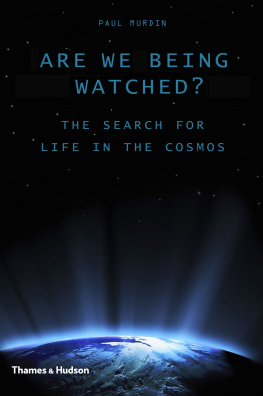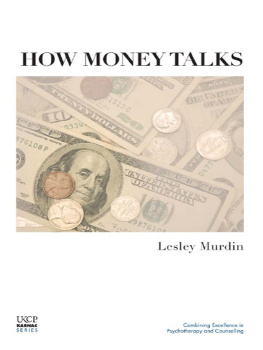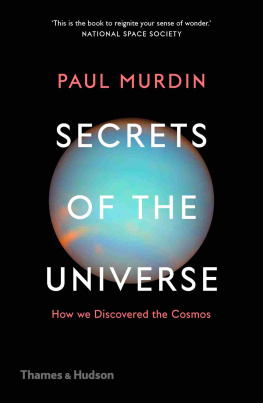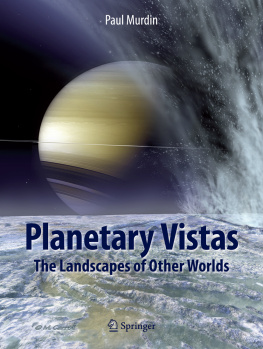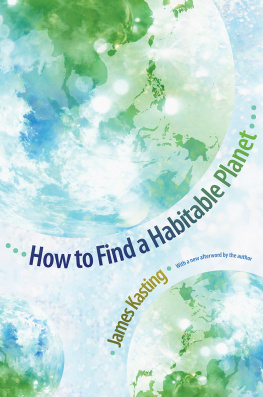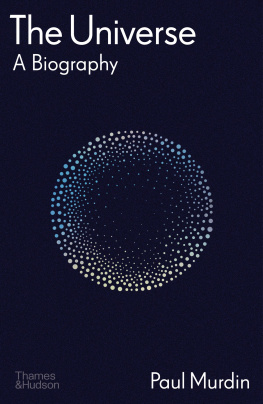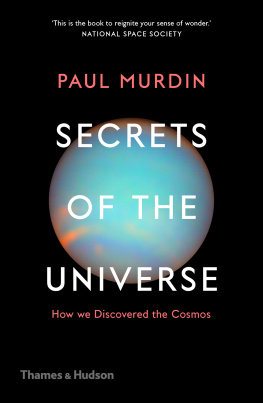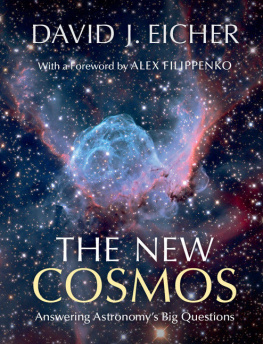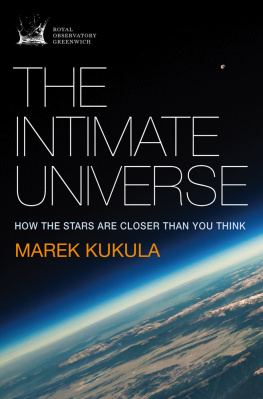About the Author
Paul Murdin has degrees from Oxford University and the University of Rochester, New York. In 1971 he discovered the first black hole in our Galaxy. He has been President of the European Astronomical Society, Director of Science in the British National Space Centre and Treasurer of the Royal Astronomical Society. He has published some 150 scientific papers, edited the specialist multi-volume Encyclopedia of Astronomy and Astrophysics, and is the author of a number of popular books on astronomy, including Secrets of the Universe (Thames & Hudson, 2009).
Acknowledgments
I should like to thank Professor Charles Cockell, of the School of Physics and Astronomy at the University of Edinburgh, and Dr Leila Battison, of the Department of Earth Sciences at the University of Oxford, for their invaluable suggestions during my work on this book.
Paul Murdin
The twenty-first century is the century of astrobiology: this is the era in which we will discover life on other worlds, and learn from it. This will be a momentous discovery.
Astrobiology is the science of the nature and distribution of life in the Universe. As I write, astrobiology is a science about something that might exist, not something that exists for certain. I can make my hopeful prediction about the discovery of life in the Universe because in the last years of the twentieth century scientists have several times come so near to such a discovery without quite nailing it. There has always been a but that has turned the initial thrill of the possibility of discovery into an agony of doubt, still unresolved. Radio astronomers have intercepted a signal with all the signs that it was both celestial and artificial, but it never repeated and remains an undeciphered mystery. Meteoriticists have found a meteor from the planet Mars containing fossil shapes similar to bacteria and biologically produced minerals, also apparently from Mars, although there were other terrestrial (and/or mundane) explanations. Space scientists have landed robotic spacecraft on Mars with experiments to test the soil for life and found the expected chemical activity, but, as I will explain in detail in , it was a bit peculiar and there were no dead bodies in the soil. Astronomers have found hundreds of planets orbiting other stars, but their equipment has not until recently been capable of finding any earth-sized planets, and still has not found any that are truly Earth-like, although, as I will show later, it is likely that they are abundant. Space scientists have found niche habitats on remote planets in our own Solar System that are environmentally similar to habitats on Earth where life teems in abundance, but have not yet visited them to prove they are fertile.
Plans are being made. In the last years of the twentieth century, man was watching these worlds keenly and closely, scrutinizing and studying them as narrowly as a man with a microscope might scrutinize the transient creatures that swarm and multiply in a drop of water. Some may think of these worlds only to dismiss the idea of life upon them as impossible or improbable. At most, some men fancy there might be life upon Mars, inferior to themselves and ready to welcome a missionary enterprise. Yet across the gulf of space, our scientists intellects, vast and cool and unsympathetic, regard these worlds with curious eyes, and slowly and surely draw their plans against them.
In the rather stilted nineteenth-century words of the above paragraph I have turned around the opening lines of H. G. Wellss (18661946) War of the Worlds (see ), which describe how we might have been seen by Martians plotting to invade Earth, to convey how, almost exactly one hundred years later, we are regarding those other worlds on which we might find life. We too plan to invade, after discovering evidence of life there. Scientists do not, however, have the killer cluster of evidence that life exists anywhere in the Universe to make it more than speculation that we would find it if we left our planet.
The reason why we must continue to try is that we can be sure that the life that we find in other worlds will be both like and unlike ours. It will be like ours because it looks as if there is one good way to make life from chemicals that are everywhere, in environments that are common, through processes that are natural: probably life somewhere else will have found the same way to come into existence. In any case, if the life we find is not sufficiently like ours, we will not recognize it as life at all.
But extraterrestrial life will not be the same as life here on Earth. The species that we find will certainly be different; biologists still find distinct and previously unknown species when they investigate unexplored environments on Earth, so we can certainly expect to find new species on other planets. Although they will probably be carbon-based, they may not function chemically in precisely the same way that our life does. Life here on Earth exists with the distinct biochemistry that it does because this was the way that life evolved on Earth. Some possible chemical architectures never happened, others may have started and never took off, and others may have started and evolved but, due to some chance event, died out. Life elsewhere could well have evolved in a biologically different way, and therefore with different capabilities. It would be a rich resource to know what those capabilities are, and how extraterrestrial life differs from ours in its make-up and machinery.
So, if we find new forms of life, we will learn from the discovery, by comparing and contrasting them with ours. We will extend our knowledge of biology and biochemistry, and, as a result, make advances in medicine and biotechnology. Who knows where that will lead? We see vaunted in science fiction (for example, in such films as Blade Runner and Alien) the value of off-world mineral deposits and other natural resources. The intellectual capital found from the examination of extraterrestrial life is likely to be socially and financially much more valuable: the greater understanding of life that we will acquire will lead to new medicines, new chemistry, new industrial processes. But of course we first have to find extraterrestrial life in order to acquire the new knowledge.
There will, however, be other effects upon our way of looking at things, of understanding our position in the Universe, which will be more momentous. The discovery 400 years ago that our planet was not the centre of the Universe but was one typical planet of the half-dozen planets then known in orbit around the Sun (Mercury, Venus, Earth, Mars, Jupiter and Saturn) changed our world picture for ever. The same will surely be so of the discovery of life elsewhere in the Universe, even if we cannot say precisely what the impact will be.
According to anthropologist Kathryn Denning, the search for extraterrestrial life might be like the hunt for the unicorn, the story woven into a tapestry from Brussels (c. 1500) that now hangs in the Metropolitan Museum of Art in New York.
A noble visionary few go in search of something rare and beautiful that may not even exist; they find it; it resists capture; there is a drama of some sort (in this case the death and resurrection of the beast); they deliver it to the ruler who rather fancies rare and beautiful things that no one else has; and the beast lives happy ever after in blissful contentment in captivity, utterly tamed.
She goes on to warn, however, that:
even if we can hunt life and then triumphantly capture it, and keep it in a cage, domesticate itbeware of thinking that we can do that with lifes meaning as well. The idea that we can predict what a detection of other life will mean to the world, that we can use our cleverness to control what that information will do in the world, that we call those shotsthis is the stuff of fairy-tales.
Next page
